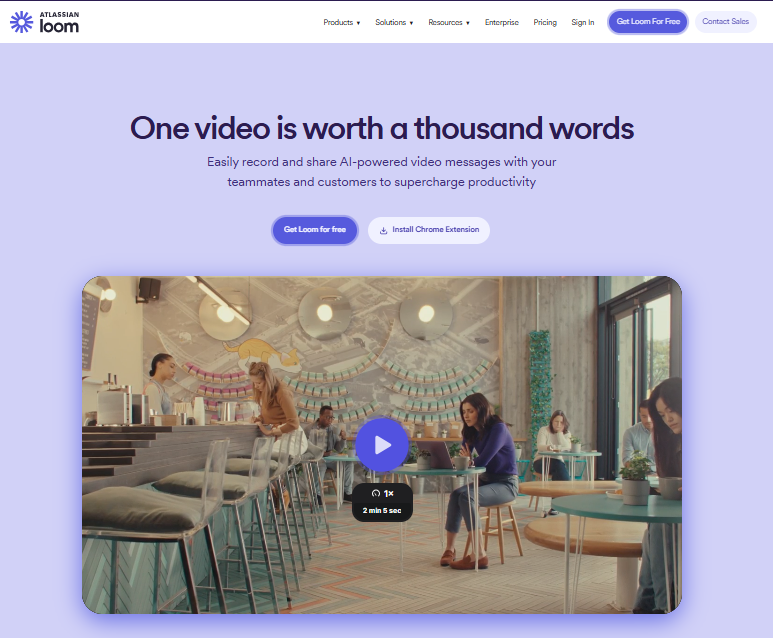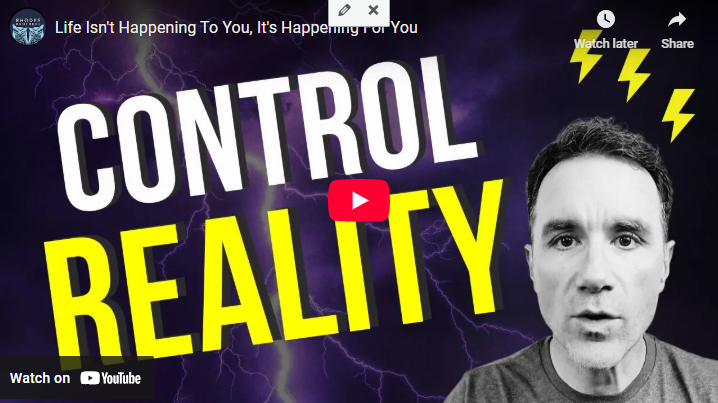For More Free Videos, Subscribe to the Rhodes Brothers YouTube Channel.
“Constraints don’t limit your creativity—they refine it. They squeeze greatness out of you.” — John S. Rhodes, Rhodes Brothers
Ever sit there, staring at a blank screen, thinking, “Where do I even start?” Yeah, we’ve all been there. Whether you’re trying to write a blog post, launch a side hustle, plan your next big thing, or just cross something off your to-do list—it’s easy to get stuck when everything feels possible. Too many options can feel more like a roadblock than a runway.
But here’s the good news: your greatest breakthrough might be hiding behind your biggest limitation.
That’s the paradox—and the power—of constraints.
In an age where we’re told that “more options” and “more freedom” mean better results, the truth is far more compelling: constraints drive creativity. Whether it’s a tight deadline, limited budget, or a two-color palette, working within boundaries often sparks our most powerful ideas.
In this post, we’ll dive deep into how constraints can unlock your full creative potential. We’ll explore:
- Why constraints matter more than ever in a distracted, overwhelmed world
- How to use limitations to your advantage
- Real-world examples of constraints boosting success
- Common mistakes people make when avoiding limits
- Tools and steps to profit from this mindset shift
And as John S. Rhodes of the Rhodes Brothers put it: “When you are limited, you are more powerful… because creativity gets wrung out of you.”
Let’s see how that works—and how you can use it starting today.
TL;DR
- Constraints increase focus, reduce overwhelm, and force innovation
- Deadlines, budgets, and limitations can be your biggest creative allies
- Research shows creativity thrives under pressure, not in total freedom
- Tools like timers, minimalist frameworks, and limited resources can jumpstart your ideas
- Avoid the trap of “too many options” that kills momentum
- Learn how to profit from constraint-driven ideas in business, art, and content creation
Why Constraints Work: The Science Behind Less is More
Let’s get one thing straight: constraints aren’t about holding you back—they’re about pointing you forward. In a world overflowing with options, possibilities, and distractions, having limits can actually help you do your best work. Science backs it up, and so does real life. When you’re boxed in, your brain doesn’t shut down—it gets to work.
The Paradox of Choice
We’ve all been there: 73 types of candy, and you… freeze. You don’t want to pick the wrong one.
That’s the Paradox of Choice—a psychological principle that shows more options often lead to anxiety, indecision, and regret.
Constraints Create Urgency and Focus
Deadlines are one of the most powerful constraints. In fact, people are 3x more likely to finish a project when there’s a time limit, according to a Stanford behavioral study.
It’s not about pressure—it’s about clarity.
You’re no longer asking, “What should I do?”
You’re asking, “How can I do the best job with what I’ve got—right now?”
As Rhodes says in his video: “Constraints focus your attention. They focus your firepower.”
How to Turn Constraints Into Creative Superpowers
Let’s be real—constraints aren’t just obstacles. They’re creative fuel. When you stop trying to do everything and start working within clear boundaries, your ideas get sharper, your focus gets tighter, and your results get better. Here’s how to tap into that superpower.
1. Embrace Deadlines: The Creative Accelerator
Deadlines aren’t just pressure—they’re permission. Permission to begin, to make progress, and to finish. Without a deadline, ideas float around. With one? They get done.
Use these tools to put time on your side:

- Pomofocus.io – A simple, customizable Pomodoro timer to break your work into 25-minute creative sprints.
- Google Calendar – Block out “focus sprints” and set clear start-and-stop times. Add reminders to keep yourself accountable.
- Forest App – Stay off your phone, plant a virtual tree, and grow a forest as you stay focused. Fun, effective, and oddly satisfying.
Pro Tip: Set a 25-minute timer. Tell yourself, “I only have to focus until the bell rings.” Most of the time, you’ll keep going even after.
2. Limit Your Tools (Yes, Really)
Ever get excited about a new app, a fancy notebook, or the “perfect” software—and end up doing nothing? You’re not alone. Too many tools can kill momentum.
Try flipping the script:
- Design in black and white only. Focus on form, not color.
- Use your phone’s Notes app for your next blog or video script. No formatting, no distractions.
- One-take video challenge: Hit record, speak your message, no edits allowed.
Real-World Example:
Filmmaker Robert Rodriguez made El Mariachi with just $7,000 and limited gear. His constraint? No budget. The result? A film that launched his career—because the story and grit shone through.
Recommended Tools:

- Bear App – A minimal note-taking app designed for distraction-free writing.
- Canva Free Plan – Great for forcing yourself to design with limited fonts, templates, and features.
- Loom – Record videos with just your webcam and screen—perfect for one-take content creation.
3. Work Within Physical Constraints
You don’t need a fancy studio or a 20-foot whiteboard wall to create amazing work. In fact, working within a tiny space can boost your focus.
Use what you’ve got:
- Got a small room? Turn it into a cozy, echo-free podcast booth using pillows and blankets.
- Just a corner desk? Embrace minimalism. Keep only what you need: your laptop, notebook, and one pen.
- Working in a noisy space? Use noise-canceling headphones and ambient focus playlists like Noisli.
“Your whole life is built around these kinds of constraints… they’re not bad. They’re powerful.”
– John S. Rhodes
Tool Suggestions:

- Noisli – Mix ambient sounds for a distraction-free focus zone
- DeskTime – Track how you use your time and optimize your workspace habits
- Otter.ai – Record and transcribe ideas quickly when you’re working in tight or unconventional spaces
4. Restrict Your Choices Intentionally
If you give yourself too much room, you’ll end up everywhere. Want to improve your creative clarity? Shrink your choices on purpose.
Try these simple constraints:
- Only three bullet points per slide in your next presentation
- Stick to one message per video—no extra fluff
- Focus on one theme per blog post and go deep instead of wide
The result? Cleaner content. Stronger ideas. Better results.
“If you can’t explain it simply, you don’t understand it well enough.”
– Albert Einstein
Tools to Help You Stay on Track:

- Notion – Use simple templates with limited sections to structure your thoughts
- Hemingway Editor – Write clearly and concisely; it flags long sentences and complicated words
- Trello – Keep one clear task per card to avoid overwhelming your workflow
By using these tools and embracing these tactics, you’ll quickly find that constraints aren’t barriers—they’re blueprints. They give your creativity structure, your ideas momentum, and your goals a finish line.
Actionable Steps on How to Leverage Constraints at Any Stage of Life
No matter where you are in life or what your goals look like, constraints can be your secret weapon to stay focused and make real progress. The key is to tailor them to fit your current season and situation.
For beginners—whether you’re a new creator, entrepreneur, or student—start by setting a daily 30-minute creative challenge. This keeps the pressure low and the momentum high. Stick with the tools you already own instead of hunting for shiny new ones. And to avoid overwhelm, focus on just one topic or idea per project. Simplicity breeds clarity, especially when you’re just getting started.
For millennials and busy professionals, time-blocking is your best friend. Constrain your schedule by carving out specific windows for deep work and protect that time like you would a meeting. Turn off all notifications for at least two hours a day to create a distraction-free zone. And perhaps most importantly, focus on just “One Thing” per day—something that truly moves the needle. (If you haven’t read The ONE Thing by Gary Keller, now’s a good time to start.)
For retirees or career changers, constraints can bring structure and purpose to your transition. Choose one new skill to learn over the next 90 days—not five, just one. Join a mastermind group or community that follows a clear, fixed format to add accountability. And simplify your learning by sticking to one resource at a time, such as a single book, course, or podcast series. This helps you go deeper without getting distracted by too much information.
By applying these small but powerful constraints to your daily routine, you’ll find that progress becomes not only possible—but sustainable.
Common Mistakes to Avoid When Working Without Constraints
While it’s tempting to believe that more freedom leads to better creativity, the opposite is often true. Many aspiring creators, professionals, and even seasoned entrepreneurs fall into the same traps when they avoid using constraints. Here’s a breakdown of the most common mistakes—and how to fix them with intention and clarity.
Mistake 1: Believing More Freedom = More Creativity
One of the biggest myths in the creative world is that unlimited freedom breeds brilliance. But in reality, too many options often lead to analysis paralysis. When everything is possible, nothing gets done. You might find yourself stuck in an endless loop of brainstorming, switching directions, or waiting for the “perfect” idea to appear. True creativity thrives under direction and boundaries. When you give yourself fewer paths to choose from, your brain becomes more resourceful—and that’s where innovation lives.
Fix it: Set clear limits before you begin. Define your tools, your time, and your topic. The tighter the frame, the more focused your work becomes.
Mistake 2: Avoiding Deadlines and Waiting for Inspiration
Waiting for inspiration is like waiting for lightning to strike. You might get lucky once, but it’s not a strategy. Many people avoid setting deadlines because they fear pressure will ruin the process. But the truth is, deadlines create urgency, which fuels action. They shift your mindset from “someday” to “today.” Without a time limit, it’s easy to keep refining, tweaking, or procrastinating—at the cost of momentum and completion.
Fix it: Set artificial deadlines for every project—even if it’s just for yourself. Use timers, calendar blocks, or productivity tools like Pomofocus or Trello to give your work a sense of structure and urgency. You’ll be amazed at what you can create in a short, focused window.
Mistake 3: Using Too Many Tools or Platforms at Once
It’s easy to fall into the trap of thinking the right tool will solve your productivity issues. But the truth is, more tools often lead to more friction. Switching between apps, learning new platforms, or testing every “next big thing” can eat up time and energy that should be going into your actual work. Instead of simplifying your creative process, you’re complicating it—and losing focus in the process.
Fix it: Pick one or two tools per task and stick with them. Whether it’s writing, designing, managing tasks, or communicating, aim for depth over variety. Master the tools you already use before chasing new ones. Often, creativity flows better when you’re familiar with your environment, not constantly adjusting to a new one.
The Golden Rule: Create With Limitations, Not in Spite of Them
Constraints aren’t barriers—they’re building blocks. When you intentionally limit your time, tools, and choices, you give your brain clear boundaries to work within. That clarity leads to faster decisions, deeper focus, and often, more original results.
So next time you feel stuck, don’t ask, “What more do I need?”
Instead ask, “What can I do with what I already have—and within a set time?”
That’s where the magic happens.
Frequently Asked Questions
How do I get started with using creative constraints?
Start small. Set a 30-minute timer and use only one tool. Limit your options and see what comes out.
What if I don’t feel creative under pressure?
That’s normal! But often, pressure reveals creativity. Start with low-stakes tasks.
Can constraints apply in business too?
Absolutely. Budget caps, limited staff, and short timelines often lead to breakthrough innovations.
How do constraints reduce stress?
By narrowing your focus, you eliminate decision fatigue and increase clarity.
What’s an example of a good constraint for writing?
Use a word count limit (e.g., 500 words max) or write using only short sentences.
Are constraints just deadlines?
Nope! They can be time, space, tools, team, format, or even emotional boundaries.
Can you be too constrained?
Yes—if the constraint blocks all action. The key is balance. Constraints should fuel, not freeze.
What tools can help me stay within constraints?
Tools like Trello, Notion, and Pomodoro timers help keep you focused and inside your chosen limits.
Do successful people use constraints?
Absolutely. Steve Jobs limited Apple’s product line. Picasso painted in blue for years. Constraints = genius fuel.
How do I know if a constraint is working?
If it sharpens your focus and speeds up your output—it’s working.
Creativity Loves a Cage
Constraints aren’t your enemy—they’re your secret weapon.
When you limit your tools, time, or choices, you unlock a deeper well of creativity, focus, and productivity. Whether you’re writing a novel, building a business, or baking the perfect brownie—the box you’re in might just be the key to thinking outside it.
So next time you feel stuck, ask yourself: What’s the constraint I can embrace today?
Because as John S. Rhodes says: “With a proper constraint, great things can happen.”
Get started today: Set one small constraint on your next task, and let the magic happen.
Thanks for checking out this article. Want more deep insights on mastering your mind, business, and creativity?
Subscribe to the Rhodes Brothers YouTube Channel for powerful videos that guide you to greater wealth through mastery.
Resource List
Books
- The War of Art by Steven Pressfield
- Essentialism by Greg McKeown
- Steal Like an Artist by Austin Kleon
- The ONE Thing by Gary Keller
- A Beautiful Constraint by Adam Morgan & Mark Barden
Courses & Podcasts
- CreativeLive’s Productivity Masterclass
- The Tim Ferriss Show – Episodes on limitations and creativity
- Deep Work course by Cal Newport
Tools & Apps
- Pomofocus.io – Time-boxing
- Notion – Constraint-based content planning
- Forest App – Stay focused
- Trello – Visualize tasks within constraints
- Canva Free Plan – Limited design tools = focused creativity



